Second home real estate on the slow path to recovery
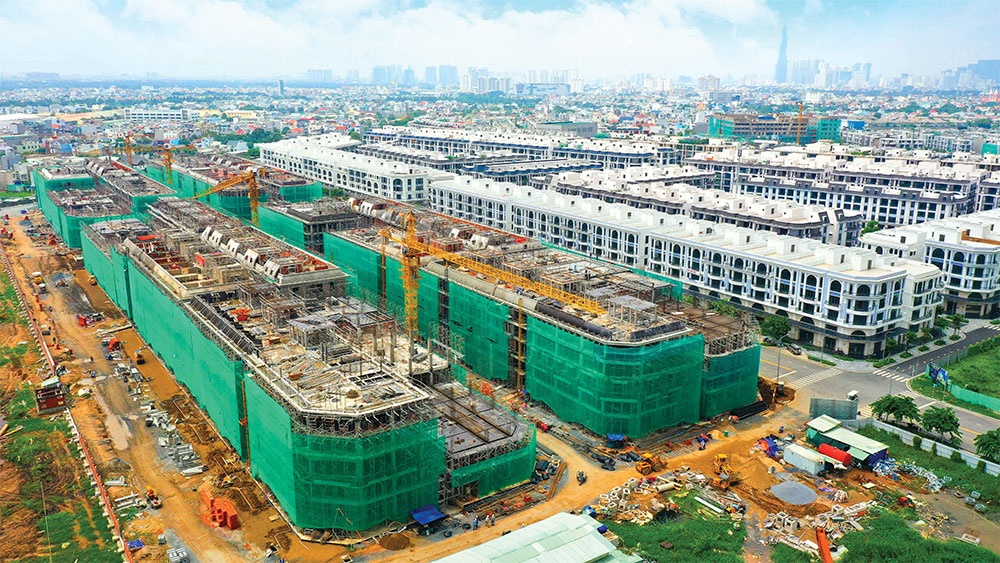 |
| Hotel supply in Vietnam has tripled over the past decade, photo Le Toan |
According to a report by DKRA Vietnam, the supply of villas and town houses across the country continued to decrease from the end of the second quarter of 2022. Specifically, in April only two projects were opened for sale, providing 12 apartments to the market, down 69 per cent from the previous month and down 98 per cent compared to the same period last year.
Particularly, the Central region recorded the fourth consecutive month that no new projects were introduced to the market.
“It is expected that in the next few months, supply and demand may increase slightly. However, the market will not have obvious fluctuations with key transactions, except from expected transactions on Phu Quoc island,” according to DKRA’s report.
The primary selling price did not alter greatly compared to the previous month. Instead, investors have aggressively launched discounts up to 30-40 per cent to stimulate market demand.
Contrary to the aforementioned segments, DKRA assesses that the condotel segment is recording a recovery in demand, although this recovery has not yet been clear.
In April, fewer than 40 condotels nationwide were sold, down 36 per cent compared to the same period last year. Only six condotel apartments were purchased during the first three months of the year. Projects with full legality and operated by top international brands are still preferred by customers.
On May 15, the Ministry of Natural Resources and Environment requested all localities to strengthen resources and conditions to proceed with admin procedures online to save time for businesses.
At the same time, localities need to step up the issuance of certificates of land use rights, ownership of houses, and other land-attached assets to land users, including condotel units.
According to Colliers Vietnam, hotel supply in Vietnam has tripled in the past 10 years. In which, the number of room types from mid-range to luxury has increased by 6-7 times since 2009.
The number of hotels operated by international brands is expected to double in the next three years, from around 125 in 2022 to more than 260 projects in 2025.
In 2019, the occupancy rate of tourist accommodation establishments such as hotels, resorts, and resort villas reached 52 per cent. Thanks to the return of domestic visitors in 2022, this index has improved most clearly in beach tourist destinations such as Ho Tram, Danang, Nha Trang, and Phu Quoc.
Meanwhile, the number of new resort villas and shophouses in 2022 has increased by 20 and 34 per cent respectively over the previous year.
According to Morgan Ulaganathan, head of Asset Services and Hospitality Advisory at Colliers Vietnam, the resort and second real estate industry in Vietnam possesses many key factors, but still faces many challenges.
“Now is the time for investors to focus on improving earnings before tax, internal rate of return, cap rate with a reasonable investment, and focus on promoting marketing, business management, and luring in new visitors,” Ulaganathan said.
Merger and acquisition activity, although slowed down last year, is expected to have an active season over the next few quarters.
“Holding a large amount of capital waiting for opportunities and a favourable pricing evaluation, foreign investment funds may make bold moves to expand market share before hotel revenue returns to pre-pandemic levels,” he added.
According to the Vietnam National Administration of Tourism, in April more than 984,000 international visitors entered Vietnam, the highest since the beginning of the year, and an increase of nearly 10 per cent compared to the previous month.
Generally, for the first four months of the year, more than 3.7 million international visitors came to Vietnam. An average of 9.5 million domestic arrivals nationwide, reaching 38 million in the past four months. Total revenue from tourists was estimated at VND196.6 trillion ($8.3 billion).
As a result, revenue from accommodation and catering services was estimated at VND214.8 trillion ($933 million), up nearly 26 per cent over the same period last year. Tourism revenues in the past four months are estimated at VND9.1 trillion (395.6 million), more than double compared to the same period last year.
The number of international visitors also increased thanks to more than one million tourists coming from South Korea in the first four months. There were also 263,000 American arrivals and 252,000 Chinese arrivals.
| Gia Long Nguyen - Special counsel, Baker McKenzie We see that in central business district areas, there are prime locations with hot access, and there are still a lot of potential buyers looking to buy at a good price. The government is revising the rules about how to restructure corporate bond issues for developers. The draft land law and draft housing law will hopefully be adopted within this year. We see more stability in the inflation rate in Vietnam, and also interest rates being controlled. In terms of merger and acquisition visibility from this year onward, there’s still potential. Having looked at the market, the market is now trying to reshape in the right direction. There have been conversions of different types of properties and residences, but how we put it into reality needs more regulation. We know that in residential projects, food and beverages or retail space is critical, but we need to ensure the entire business model and the operation model. There are also questions over how to guarantee that branded international management companies are included in residential projects in the long term, and what will happen to buyers and their investment if there are any changes. So, these need to be considered in contracts carefully. We don’t see any rent initiatives into this kind of branded residence product in the city. But there’s certainly an association with homeowners that we need to consider. Gavin M. Faull - Chairman and president Swiss-Belhotel International What Vietnam needs to look at is the stabilisation of its legislation, which should be good enough to engage foreign investment. We know that Vietnam is loved by many foreigners and investors, especially from Australia, the US, and Canada, countries that have historical investments here. Especially, a second home in Vietnam is on the radar of many foreign investors. That is what going to drive the residential and hotel business. Vietnam is well-placed, but we cannot be complacent. All other countries in the world are expanding as much as they can. South America and Africa provides developing investment opportunities, too. So, it’s not automatic. There’s potential, but synchronised effort has to be made to benefit all stakeholders fairly and sustainably. Fenady Uriarte - Business development manager Southeast Asia, STR While Southeast Asia’s revenue per available room in recent times moves closer to 2019 levels, Vietnam’s overall rate is still 33 per cent behind. However, average daily rates are moving in the right direction. As we look ahead, key source markets reopening such as China and Japan could present an upside for Vietnam. Owners of independent hotels and chains are increasingly attracted to the opportunity to benefit from the scale, expertise, and network of global hotel operators. Norbert Vas - COO, Archipelago Indochina Millennials make up 30 per cent of Vietnam’s population and are shaping the travel landscape. I am both concerned and optimistic about this sector in Vietnam; concerned about where big operators are taking the concept, but optimistic because there is vast local talent and creativity and a burgeoning young domestic class of sophisticated travellers who would gladly embrace the lifestyle concept if executed correctly. Anthony Moulton - Managing director, Brand & Co. In the next three years, forecasts expect significant growth in the luxury hotel segment in this country. While luxury rooms currently have around 2 per cent of the total supply, they have 5 per cent of the pipeline. Luxury-branded residences are increasingly popular in Vietnam. Time and space is a new luxury. Ultra-high-net-worth and high-net-worth buyers want branded residences that buy them time and a home that gives them space – think super prime real estate where size matters. True luxury is about creating a space for the mind. It has to do with the quality of space, services, amenities, light and air, rather than just expensive materials. When branding and marketing these types of projects, prestige and status are still the two largest factors that make people buy luxury branded residences and luxury goods. |
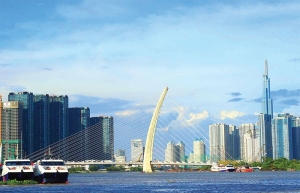 | Prospects pick up within real estate market Real estate liquidity is moving into a positive direction, with investors planning several new rounds of funding. |
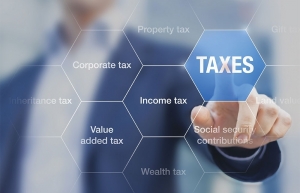 | Industrial developers eye the effects of upcoming tax regime Industrial real estate developers must be more proactive in responding to the upcoming global minimum tax policy by improving the quality of industrial zone infrastructure and providing more utilities for their tenants. |
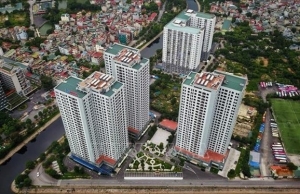 | Further interest rate cuts hoped to fuel money flows into real estate The State Bank of Vietnam (SBV) is set to further reduce regulatory interest rates on May 25, the third cut in a row since mid-March, expected to give a boost to the stagnant real estate market. |
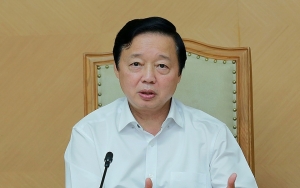 | $5 billion measure not to prop up real estate market In lieu of real estate aid, a $5 billion plan government plan seeks to develop at least one million social housing units. |
What the stars mean:
★ Poor ★ ★ Promising ★★★ Good ★★★★ Very good ★★★★★ Exceptional
Related Contents
Latest News
More News
- Sun Group breaks ground on $2 billion Van Don casino complex (December 19, 2025 | 18:14)
- Rare, beautiful, sustainable: the mark of iconic real estate (December 19, 2025 | 08:00)
- Owner-occupied housing stabilises, paving the way for new growth cycle (December 18, 2025 | 17:04)
- Unlocking urban potential of smart cities (December 18, 2025 | 16:50)
- Green finance offers 'passport' for Vietnamese construction, building materials firms (December 15, 2025 | 08:00)
- Gamuda Land commit long-term investment (December 12, 2025 | 11:49)
- HITC ties up with Evolution to develop AI and hyperscale data centres in Vietnam (December 11, 2025 | 12:09)
- Real estate deals boom via high-profile names (December 08, 2025 | 11:32)
- Industrial segment shaped by M&As (December 08, 2025 | 08:00)
- The Privé sets the benchmark for luxury real estate (December 05, 2025 | 08:28)

 Tag:
Tag:




















 Mobile Version
Mobile Version